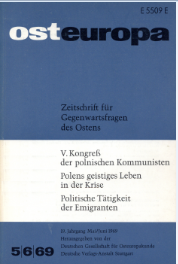

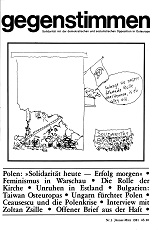
Keywords: Feminism in Poland; Polish Students Organization; Solidarność;
Solidarity today – Success tomorrow In Poland, enormous mobilizations have been taking place since last summer. Free trade unions now have 8 to 10 million members in more than 50 major industrial locations. More and more population groups want independent organizations: peasants, students, civil servants -Solidarnosc for all! Students are organizing themselves The avalanche of the Polish mass movement has left no institution, no area of life in the old state. First the workers, then all sorts of layers and groups have tackled their organization. The universities are no exception. In addition to many professors and university employees who have joined Solidarnosc, the students have created their own independent representation within a very short time. Nationwide, 22 percent of the students are members of the new organization Niezaleznego Zrzeszenia Studentow (NZS) Polish Feminists When I heard about the existence of a feminist group in Warsaw, I was very curious: would the concept of a "Christianization of feminism" also play an important role in Poland, as in the case of the Leningrad women? [See »gegenstimmen« 1/1980]. The conversation was a very positive experience.
More...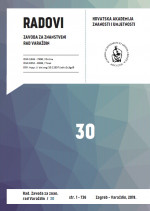
Keywords: fathers; preschool children; functional involvement; emotional involvement; cognitive involvement;
Due to the historical perception of the father’s role solely as family breadwinner and moral support to the mother the role of the father in the child’s life has not been systematically researched until the 80’s of the 20th century. The recognition that fathers are involved with children in varying degrees and in different ways, and that the way and the amount of their involvement in child care are linked with children’s cognitive abilities and socio-emotional adjustment, has led to the recognition of the importance of the research in that domain. Many researches have been conducted in this domain in the past thirty years, and the results indicate a systematic increase of the father’s functional involvement in child care over time (Biller, 1993; Parke, 1996; Pleck, 1997; Clark & O’Brien, 2004; Gray & Anderson, 2012). However, in 1997 Palkovitz proposed extending the concept of fathers’ involvement, as fathers in the life of their children are involved not only across the functional, but also across the affective and cognitive level. Through their behavior fathers provide a sense of security and love to children, and they are aware of the child’s social, emotional, cognitive and physical needs, and knowingly plan strategies for their satisfaction.
More...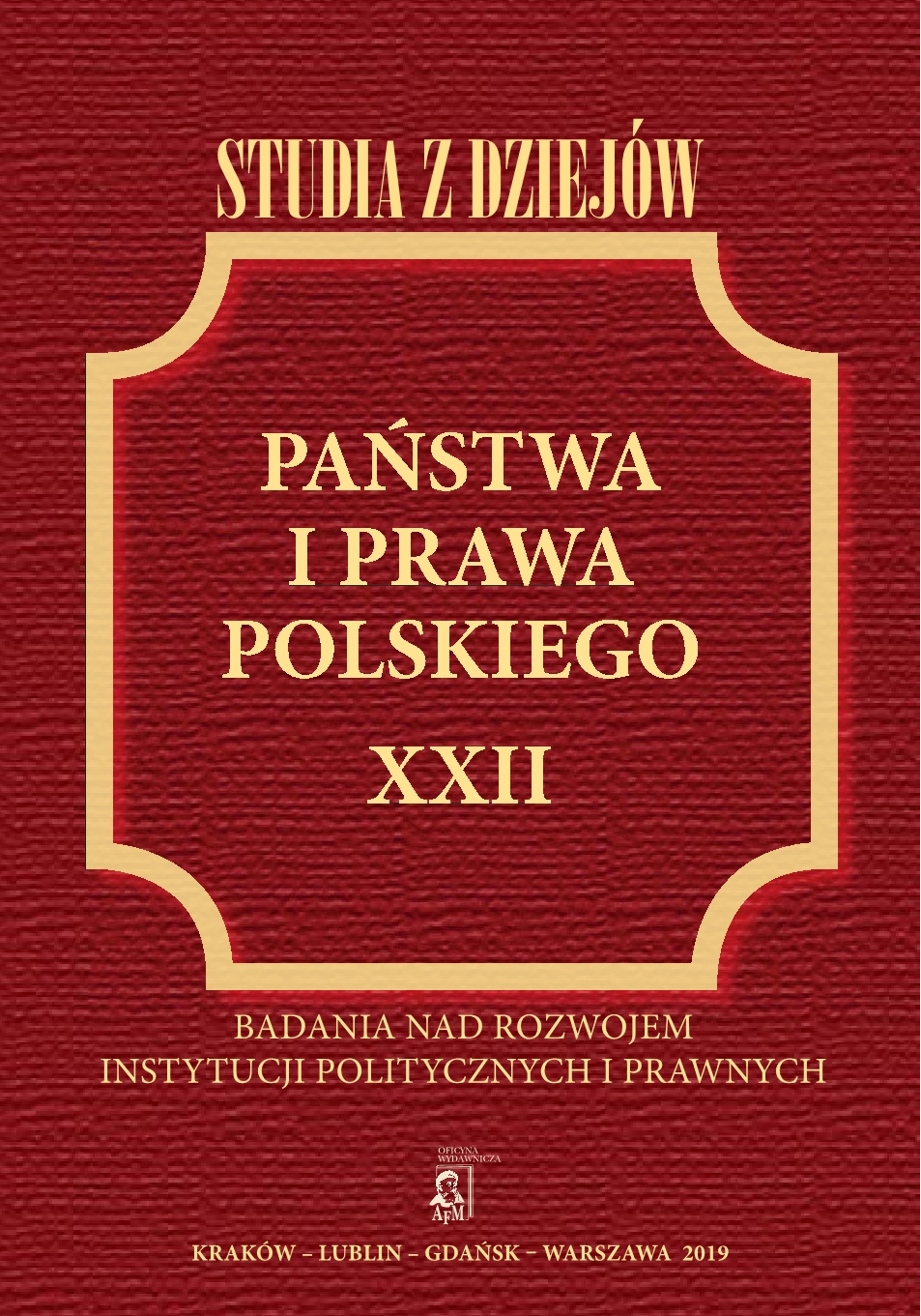
Keywords: law; medicine; Kingdom of Prussia; wanted notice; administrative district (Regierungsbezirk) of Gdańsk; Amtsblatt der Königlischen Regierungs zu Danzig;
Since 1816 in the newly formed administrative district of Gdańsk, the official journal entitled Amtsblatt der Königlichen Regierungs zu Danzig started to be published. One of the issues that periodically appears on the pages of the paper, is the question of crime, especially the wanted notices. Among the descriptions of height, age or body shape of the criminals, there also appears information that could indicate illnesses, defects, traumas and general weaknesses of the defendants. The analysis of nearly a thousand of wanted notices indicates that these kind of descriptions were frequent and could constitute an important help when identifying the fugitive. The mentioned source material helps us to partly illustrate the life of the lower class of society, mainly the criminal underworld. It also constitutes an invaluable resource for historians of medicine, material culture or law.
More...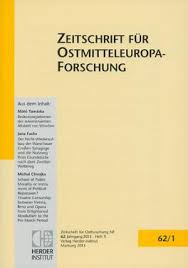
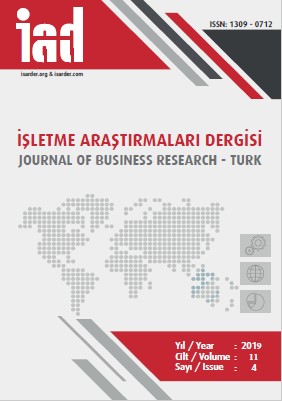
Keywords: Generation theory; Cyberloafing; Gen X; Gen Y; Job performance;
Purpose – This study aims to determine the forms of cyberloafing activities on employees along with the effects on their job performances according to generational differences. Design/methodology/approach – In the study, cyberloafing activities were measured using Blanchard and Henle (2008)‘s scale consist of 17 items. The employee performance is measured by the scale developed by Kirkman and Rosen (1999). Their scale had three dimensions, named as productivity, proactivity and customer service. As cyberloafing is considered as a deviant behavior against productivity, only productivity dimension is used. 300 questionnaires were given to food & beverage employees in Izmir, however only 250 of them were analyzed. Findings: As a result, exploratory factor analysis found that cyberloafing has four different dimensions. These dimensions were named as “recreational activities, checking updates, sports & betting and social media”.
More...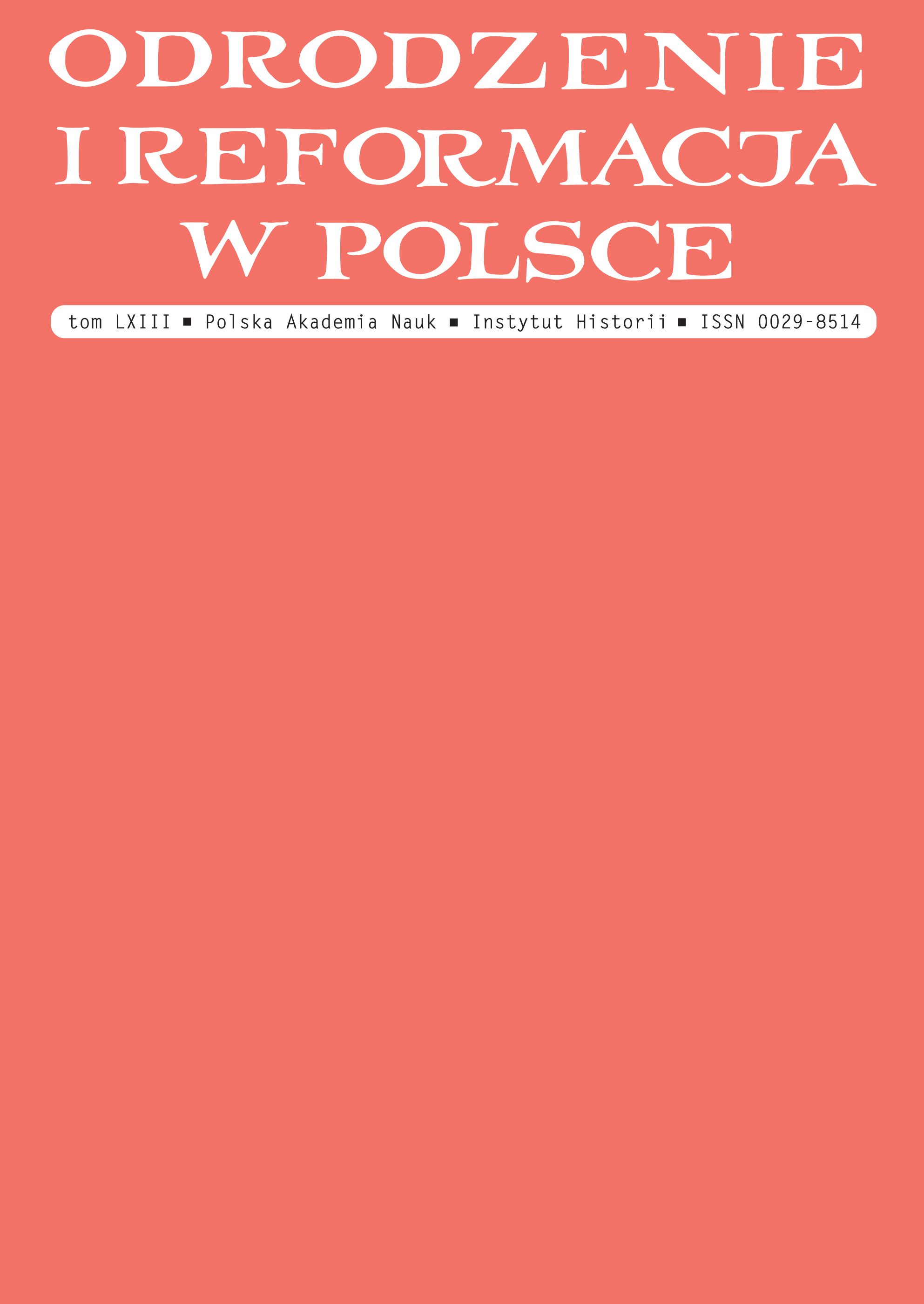
Keywords: Royal Prussia; early modern towns; crisis of the Church; reasons for Reformation; diocesan clergy; ecclesiastical judiciary;
The subject of analysis is situation of the Church in Gdańsk in 1517–1522, on the eve of first manifestations of Reformation in this town, urban centre important for Royal Prussia and Poland. Basing on the literature on the subject, but mostly with the use of original self-existent documents preserved until our times: writings, letters and records on activities of the Bishop of Włocławek, the local ordinary, the author reconstructs in the article the course of events preceding actions of the first reformer of Gdańsk, Jacob Hegge. Th e essential goal of research is an answer to the question whether Reformation ferment initiated by Martin Luther had any influence on the situation of the Church in Gdańsk. Th e case of this town is compared with the situation in several others, in Poland and the Reich, such as Cracow, Lübeck, Hamburg
More...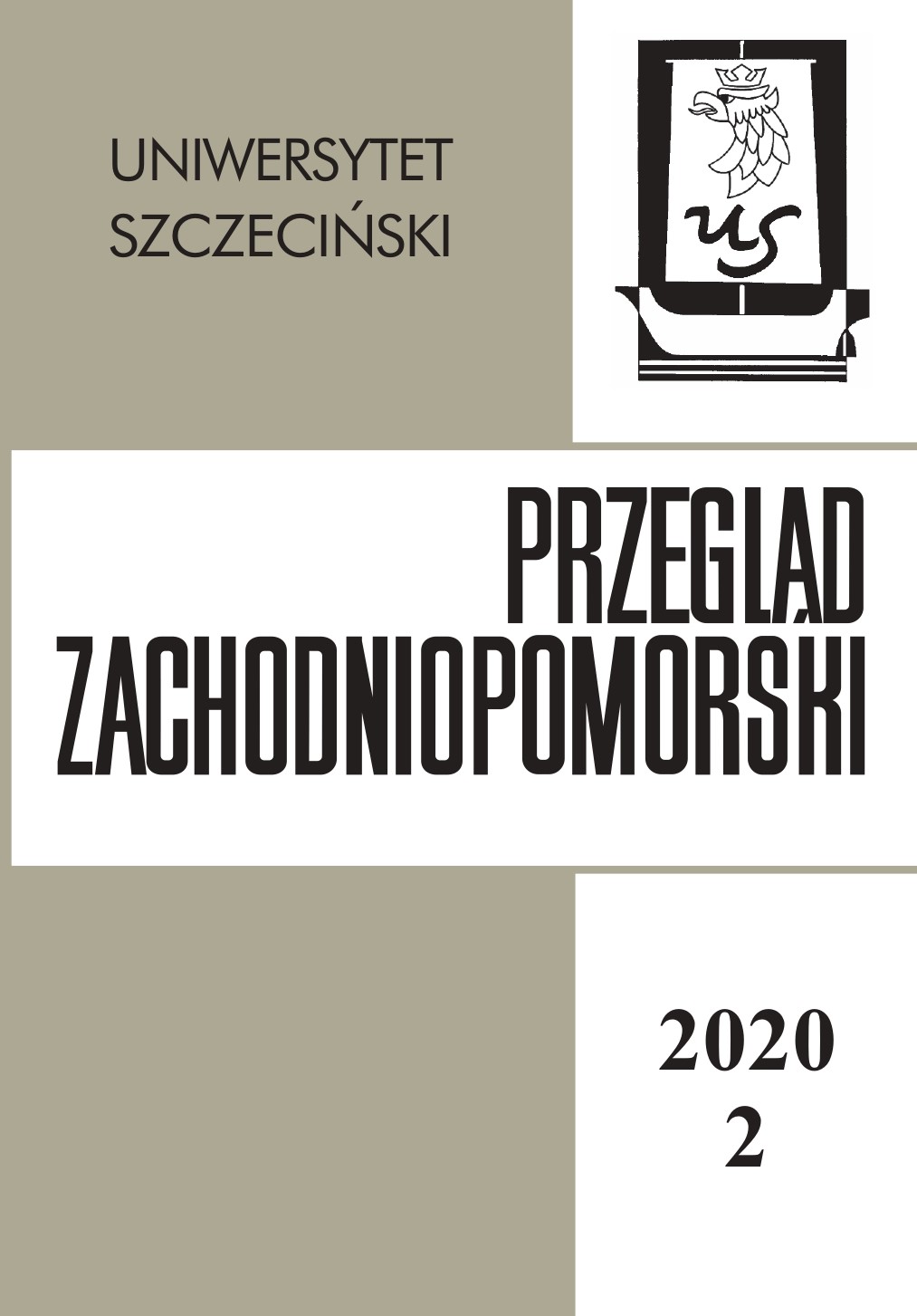
Keywords: Academic Gymnasium – Szczecin; Academic Gymnasium – Gdańsk; Acta iubilaei secundi Gymnasii Gedanensis; congratulation letter; programma; transcription; translation; Respublica litteraria
The text comprises selected fragments of the official Latin correspondence between the Academic Gymnasium in Szczecin and the Academic Gymnasium in Gdańsk which in 1758 celebrated its 200 anniversary. These texts were printed in Gdańsk somewhere around 1758–1759 in a special jubilee publication Acta iubilaei secundi Gymnasii Gedanensis… They were authored probably by the then rector of the Szczecin school Heinrich Moritz Titz. Formally, it is a congratulation letter (one of the two officially sent from Szczecin to Gdańsk), which expressed the response of the school community to the Gdańsk jubilee. The letter was accompanied with a programma, which can be understood as an announcement of the Gdańsk jubilee. The community of the professors of the Academic Gymnasium in Szczecin addressed this announcement to its students and the prominent members of the local municipal community. These writings exemplify the institutional contacts within the Respublica litteraria. They were transcribed and translated into the Polish language. They are preceded by an Introduction in which I commented their content and form, and took an attempt to explain the role of this correspondence among many other, formally similar, congratulation texts in the Acta iubilaei secundi Gymnasii Gedanensis…
More...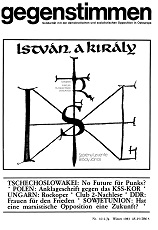
Keywords: Accusation of crime; Jacek Kuroń; Adam Michnik; Henryk Wujec; Zbigniew Romaszewski;
Anklageschrift gegen Jacek Kuroń, Adam Michnik, Henryk Wujec, Zbigniew Romaszewski; angeklagt des Verbrechens nach Art. 128 § 1 StGB in Verbindung mit Art. 123 StGB.
More...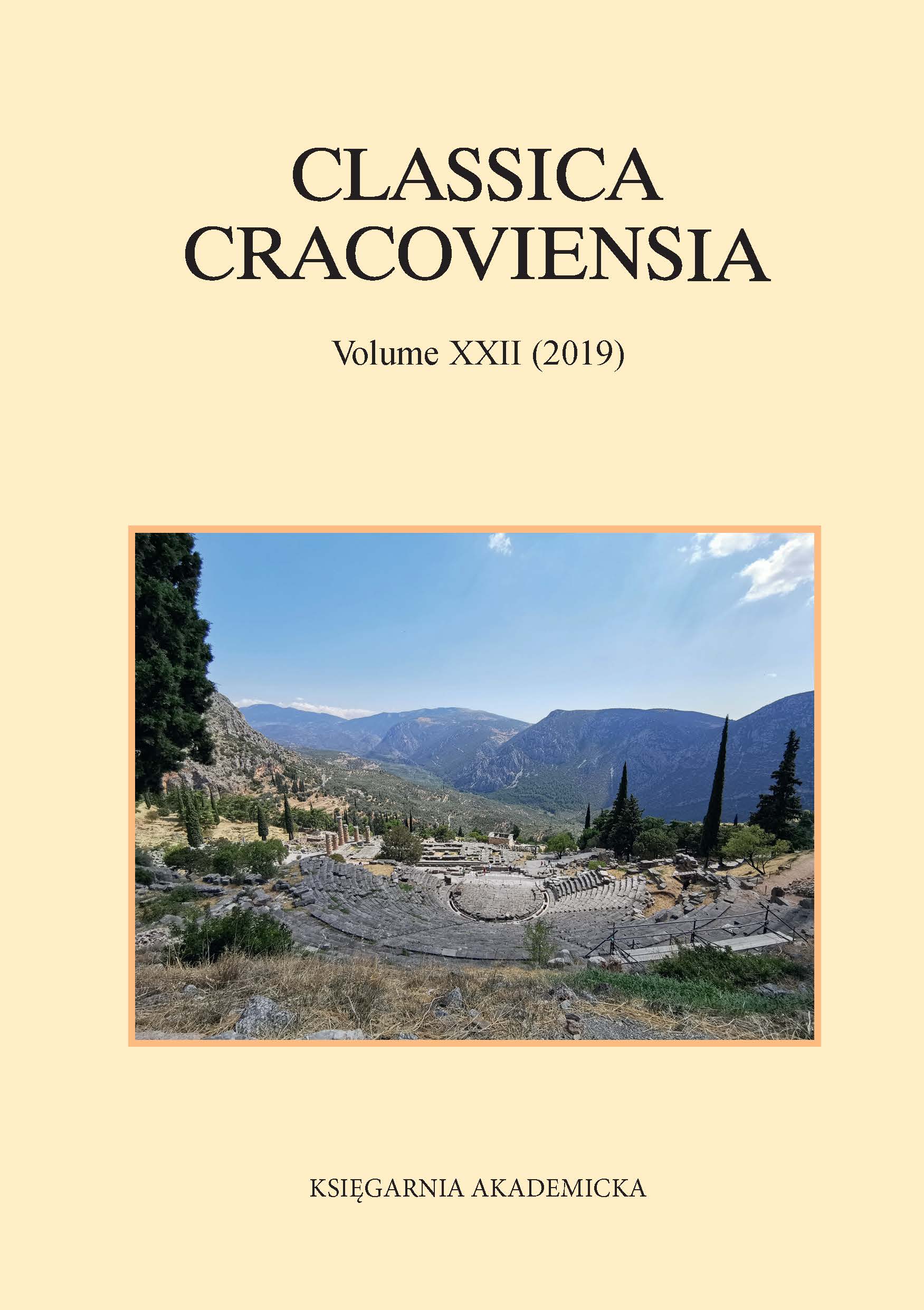
Keywords: Anna Comnena; Byzantine historiography; prologue; topos; time; memory; oblivion
Anna Comnena’s beginning of the Prologue to her Alexiad is a fine literary and rhetorical piece. It is about the problem how destructive the passing of time is, and for which the only obstacle can be to consolidate the achievements of the past in a literary work. Such a line of thought was usually interpreted in the terms of the author’s rhetorical topos. Most frequently, this topos occurs in ancient historiography whose formal features were continued by Greek historians of the Eastern Roman Empire (Byzantium). While not deyning that there is much to recommend in such an approach, the present paper tries also to pay attention to Anna’s life and stress the authenticity of her emotions. In this light the Preface to the Alexiad, while remaining an example of magnificent rhetorical argumentation, can also be seen as an authentic attempt ‘to stop’ time, an attempt made by an aging woman, conscious that this is the only chance to give meaning to her own life by preserving it in the memory of future generations, so, in a sense, to ‘immortalize’ it, given that it will be told in a written story, capable of surviving in time.
More...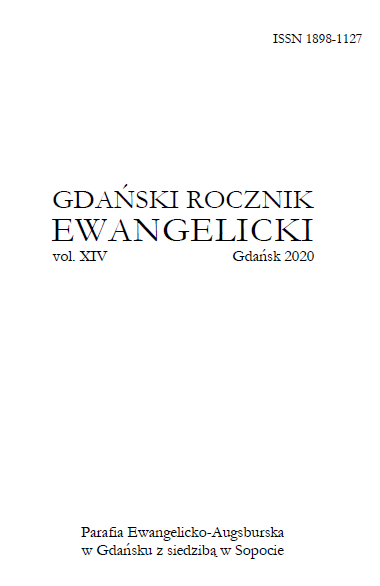
Keywords: hospitals; orphanages; prayer; social discipline;
The work presents the mandate to pray that very often appeared in the ordinances of hospitals and orphanages in Gdańsk in the early modern period. It had its roots, apart from religious inspiration, in social discipline. Expressing gratitude to God and people became an important element of prayer and it resulted in the obligation to fulfil social duties with dignity. Ordinances are a kind of behaviour scenarios (according to H. R. Schmidt), written by secular agency, but using an element of personal commitment, characteristic of religious experiences. The repeated orders to pray, as well as numerous regulations directly disciplining the patients, emphasize the fact that the city authorities of Gdańsk treated hospitals and orphanages as an area of special influence. They were used to emphasize the city council's determination to create a new society, filled with a truly Christian spirit.
More...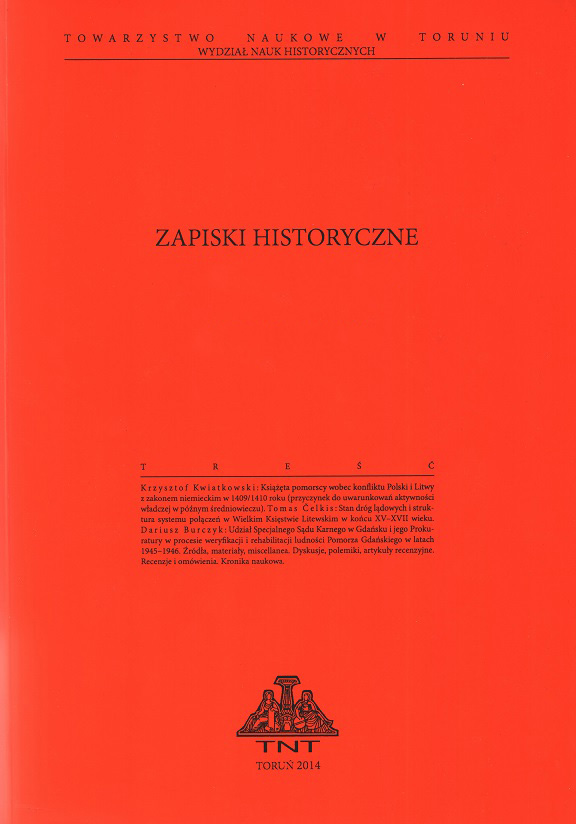
Keywords: source editing; St John the Baptist and St John the Evangelist Church in Toruń; church bells; bell-ringers; church servants; liturgical calendar; late Middle Ages
This article provides a source edition of two instructions for ringing bells at St John the Baptist and St John the Evangelist Church in Toruń (Thorn). The sources come from the collection of archival files related to the history of this church, kept in the State Archives in Toruń. They date back to the first half of the sixteenth century. The authors attempted to establish the purpose of writing down the presented ordinations, characterized the church servants that appear in the source material and examined their duties regarding bell ringing. The article also examines the fees paid for ringing bells during church services and the associated remuneration for bell-ringers. Moreover, particular attention was paid to the liturgical calendar of the parish of St John the Baptist and St John the Evangelist Church in Toruń.
More...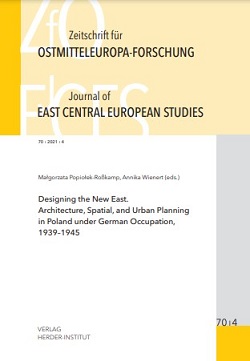
Keywords: National Socializm; architecture; exhibitions; monument protection; Heimatschutz movement;
The traveling exhibition “The Beautiful Town—Entschandelung and Design,” initiated by the Deutscher Heimatbund under Werner Lindner (1883–1964), toured the German Reich starting in 1938. Selected buildings of the organizing municipalities were integrated into the exhibiton. The Lehrschau visualized “bad buildings,” “advertising excesses” and their “ridding of disgraces” (Entschandelung), and attempted to present design principles. Werner Lindner and the German League for Homeland Protection thus positioned themselves alongside the official monument authorities. They succeeded in establishing legal foundations for these measures, which were mostly aimed at the facades of buildings. In 1943, the exhibition was discontinued due to the war, but its traces can still be found in surviving buildings until today. The design goals propagated were significant for German architecture in the postwar period. The exhibition can be seen as a counterpart in the field of architecture to the well-known propaganda show “Degenerate Art.” The starting point was the Entschandelung of Semlower Street in Stralsund in 1937. This term refers to the phenomenon of modern building cleanup, to the ideas of the German homeland security movement, and to the redevelopment of old towns in the first third of the twentieth century, which can only briefly be touched upon here. The special relationship to the “German East” became clear in Lindner’s design principles. These, with the works of ancient Prussian master builders and examples of site-specific building in the March of Brandenburg, had their basis in a building culture that was seen as inspired by the “German East.” The plans for the reconstruction of East Prussia during the First World War were another factor that has to be taken in account here. The conception of the “East” as an area in need of reorganization and planned settlement was shared by the exhibition initiators with other National Socialist protagonists of the “German East,” thus “The Beautiful Town” became part of Heinrich Himmler’s Volkstumspolitik. The presentations of the exhibition in Poznań (Posen), Łódź (Litzmannstadt) and Litoměřice (Leitmeritz) serve as examples of this.
More...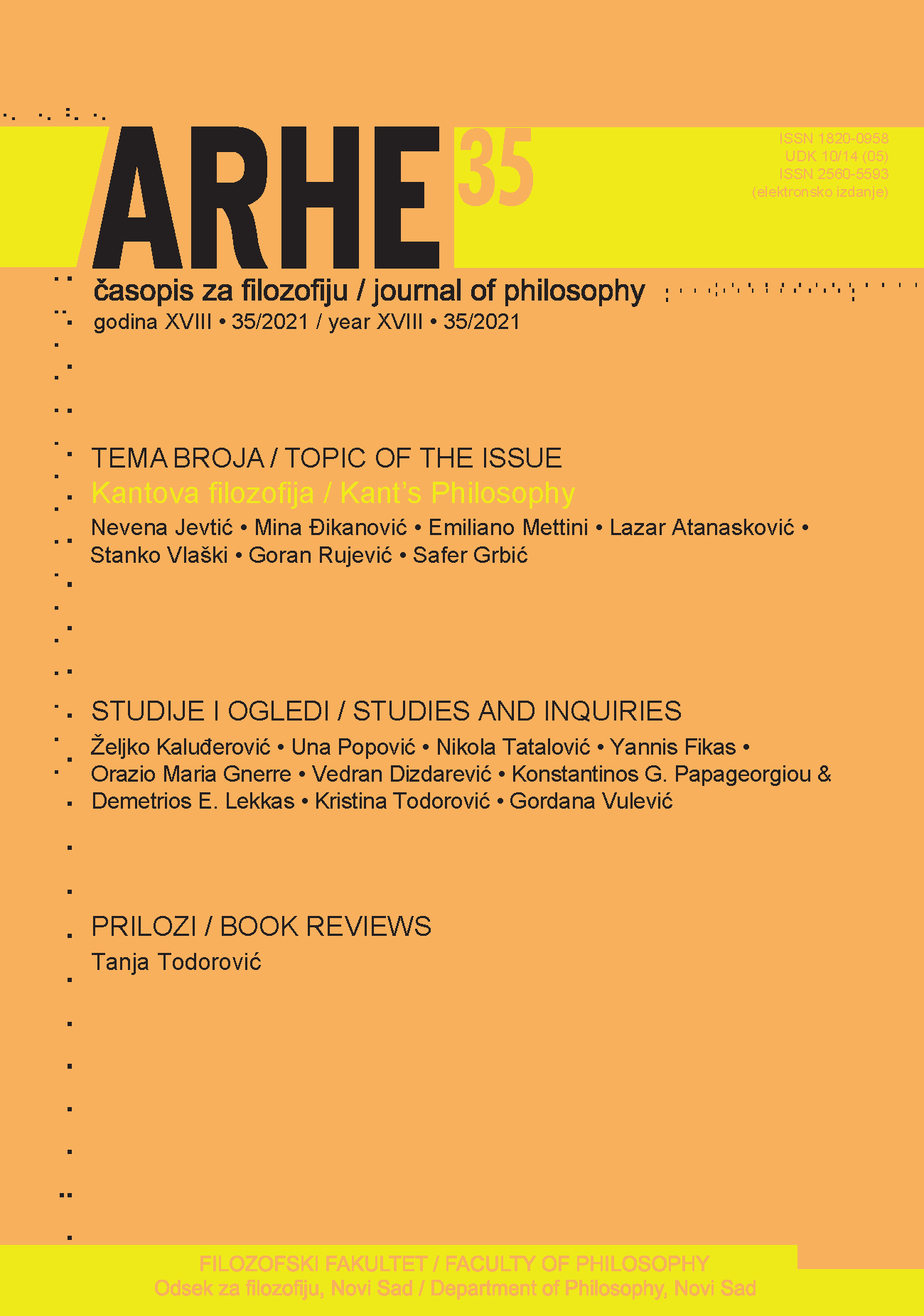
Keywords: Kant;alteration;analytic knowledge;synthetic a priori judgments;time;causality;Parmenides;Zeno of Elea;beginning;freedom;
The article demonstrates that the meaning of the revolution which has happened in philosophy with Kant’s critical philosophy can be interpreted by the inquiry concerning Kant’s very concept of alteration [Veränderung]. The author thematizes Kant’s observation that the understanding alone cannot grasp the possibility of the alteration as related to some of the fundamental insights of the Western metaphysics, precisely with the Eleatic negation of the thoughtfulness of the alteration and the moving, viz. with the Eleatic negation of the reality of kinēsis as such. The author tries to show that Kant’s integration of the concept of alteration within the system of transcendental knowledge of the subjectivity one should interpret in the light of his efforts to reveal conditions of synthetic a priori knowledge. Alteration shows itself for the lively cooperation of understanding and sensibility, concept and intuition, and as this cooperation as such. In the final chapter, Kant’s thesis that the alteration is possible due to a priori character of time – thesis by which one also accepts that everything that belongs to the future is necessary determined by the past, and therefore necessary validity of the law of causality – is interpreted as the key for the understanding of the reasons why Kant rejects possibility of the recognition of the absolute value of alteration. For Kant, one should not absolutize such deterministic concept of alteration, for the good of moral freedom as the sphere where human finds its true dignity. Therefore, this sphere from the Kantian standpoint has to transcend every discussion concerning the alteration.
More...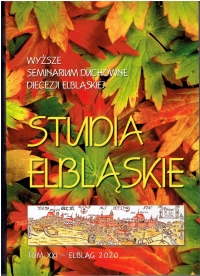
Keywords: the Bell; Elbląg (Elbing); st. Nicholas-cathedral; bellfounder, Christian Jonas; Christoph Herbst; Friedrich Schulz; Schilling; Humpert; BVG; st. Anne church
Bells perform a very important function in the liturgical life of the Church and the urban community. They are used during great church ceremonies and funerals. In the past, they were supposed to mystically ward off misery, e.g. storms, and help measure time. Parish church of st. Nicholas, the current cathedral of the Elbląg diocese, as the largest and richest Elbląg’s temple has a rich history of bells. The first instruments of this kind existed there inthe middle of XIV century. All were destroyed by fire on April 26th, 1777. A small spirelet from the end of the 18th century did not responsive to the needs and rank of the church. When the new 97-meter tower was built in 1907, the famous company Schilling from Apolda hung 6 bells, which were confiscated in 1917. New ones, with a total weight of 10 tons, appeared in 1928. These bells were also taken by war. The current 3 steel bells come from the dismantled church of St. Anne.
More...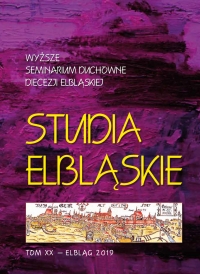
Keywords: parish system; parish network; Żuławy Wielkie; parish clergy; the Teutonic Order
Żuławy Wielkie (the alluvial delta area of the Vistula River) in Middle Ages was not only most advanced in agriculture, self-government as well as the level of prosperity of its inhabitants, but it was also the territory with strong parish system. An average parish consisted of two villages. Only two exceptions are noticed, in Nowy Staw and Lichnowy, the latter being probably the oldest, established in the 13th Century and consisted of 6 – 7 villages. It is visible that inhabitants preferred the erection of single-village parishes or at least filial chapels. The right of patronage of all churches belonged to the Teutonic Order. The patron provided the parish with a benefice (usually 4 lans – 120 morgs of land). Moreover, the inhabitants had to pay a special contribution in corn (called meszne), while their representatives (vitrici) interfered with parish finances. Parochial schools were established, supported by the inhabitants and designed both to provide most talented children with basic education and to secure liturgical servants for the church. Some parish priests from the area of Żuławy Wielkie, particularly persons with university education, served at the courts of Pogesanian bishops and the Teutonic Order.
More...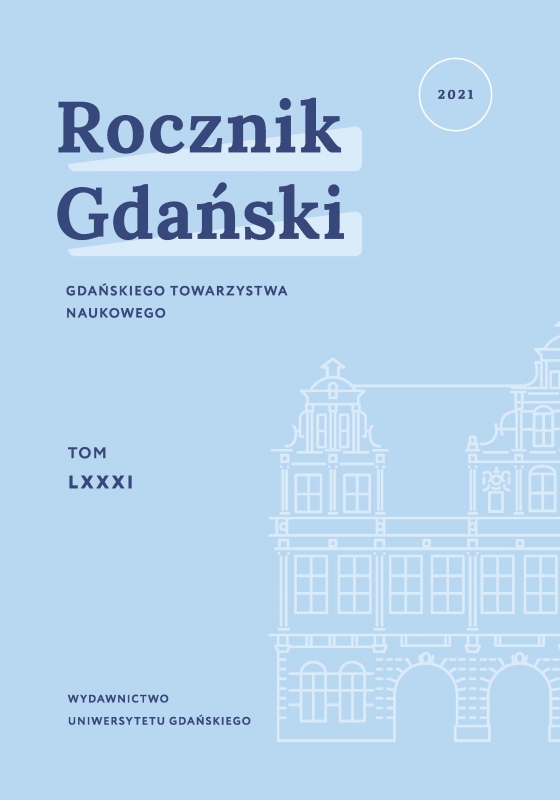
Keywords: Uphagen House Society; Gdańsk after 1989; social activity; popularisation of science
On 9 May 1990, the founding meeting of a new Gdańsk society was held in the Main Town Hall – the Uphagen House Society (Towarzystwo “Dom Uphagena”). The idea behind the initiative was to gather people who wanted to support the reconstruction of the Uphagen House and restoring it to its previous function of a museum (which it was in 1911–1944). It was only in the 1990s that it was possible to start reconstructing the interiors; the work was financed from the funds obtained from the Foundation for Polish-German Cooperation. The Society focused on popularising the history of the pre-war museum by organising concerts, literary meetings and exhibitions. The next stage came in 2005, when the Society, after changing its statute (constitution), expanded its activities to popularise the history and culture of Gdańsk; a series of lectures called “The Culture of Old Gdańsk” was initiated, which is continued to this day (as of 2021 there were 167 lectures held altogether). The Society has managed to create a circle of loyal supporters who regularly attend the monthly lectures, and it also tries to attract new ones.
More...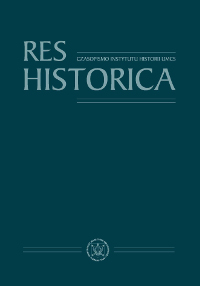
Keywords: album amicorum; City of Basel; Reinhard Wasserhun; Grand Tour; peregrinatio academica
The aim of the article is to present the journey of burgher from Basel – Reinhard Wasserhun (1586–1652) to the Polish-Lithuanian Commonwealth, which was part of his Grand Tour. R. Wasserhun stayed in the lands subordinate to the Polish-Lithuanian state for less than two months in 1614 (entries from 15 september to 13 november), where he visited at least Gdańsk, Malbork, Królewiec, Szczytno, Warszawa, Elbląg and Kraków and met with a total of 42 people. The itinerary of his stay in Poland and Prussia, as well as the circle of people he met during his journey, have been reconstructed (and statistically compiled) on the basis of the extensive album amicorum kept by R. Wasserhun during his journey. In addition to presenting his stay in the Polish state, the article aims to analyse R. Wasserhun’s journeys in the context of the self-creation of the Calvinist burgher in Poland, as well as to indicate the type of journey Wasserhun made during the „Polish” stage of his peregrination. How was this type diff erent from the type of journey he made in the Kingdom of Bohemia. The study of the above mentioned topics is also a contribution to a more in-depth source analysis of the entire album amicorum of R. Wasserhun, which is part of a vast social network of European intellectuals.
More...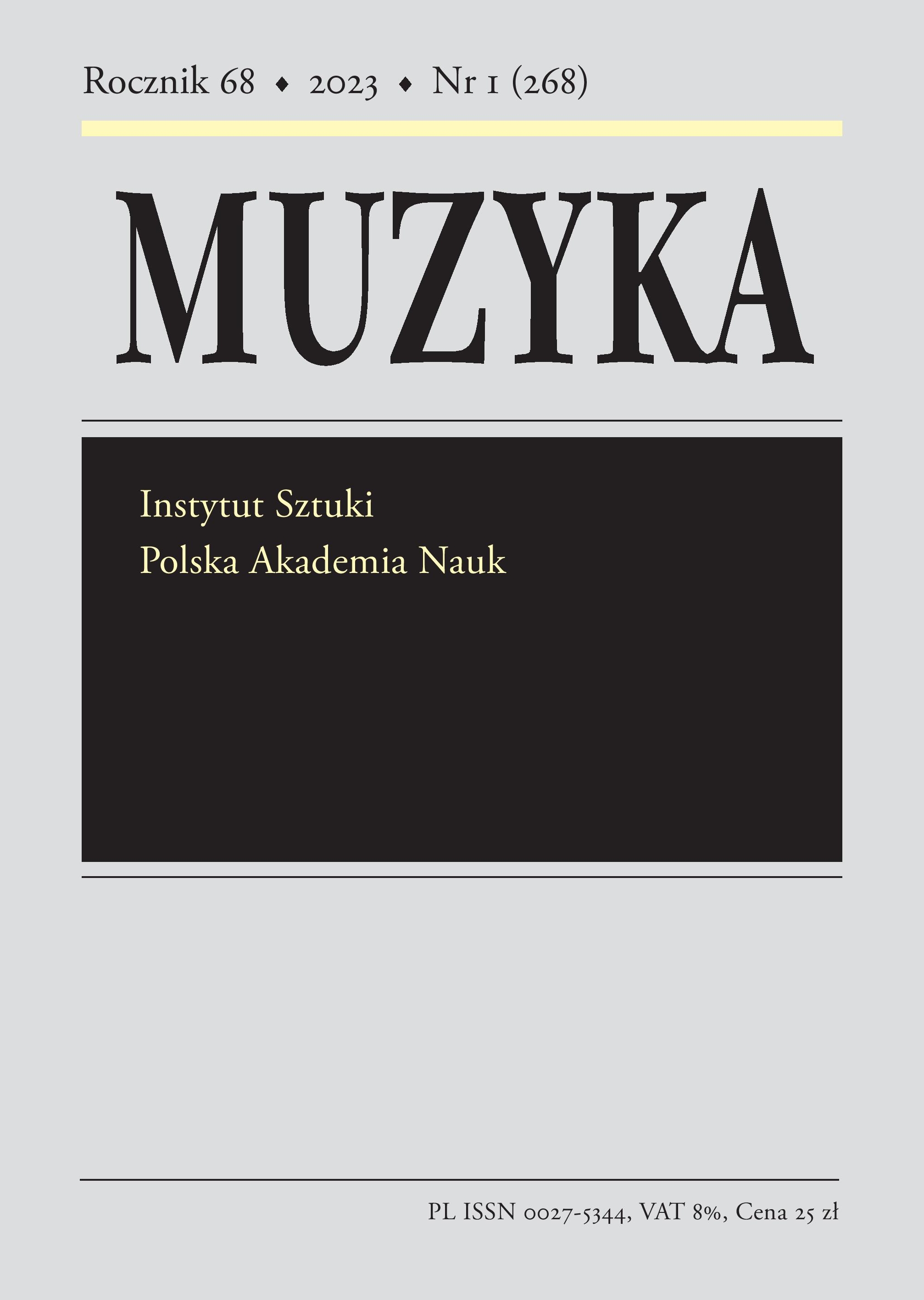
Keywords: art of book illumination;fifteenth-century music;Gdańsk scriptorium;Dragon Bookbinder the Elder;cadels;penwork;pen-flourishing;gouche decoration;Bohemian art tradition
This article analyses music manuscript Mar. F 406, originally from the collection of St Mary’s church in the Main Town (Rechtstadt) of Gdańsk, now kept at the Gdańsk Library of the Polish Academy of Sciences. The codex is a compilation of liturgical chants. This article offers the first analytical study of the source undertaken from the perspective of the history of art, with a discussion of the character and quality of the gouache and calligraphic ornaments. These decorations are presented in the wider context of illumination art in fifteenth-century Gdańsk. Stylistic and comparative analyses were supported by non-invasive XRF and IR examination.The physical characteristics of the volume, along with the results of parallel musicological studies (Piotr Ziółkowski and Kamil Watkowski), make it possible to present a new chronology of the manuscript’s compilation, distinguish the individual illuminators’ hands and obtain knowledge of the techniques and practice of the scriptorium in Gdańsk. The codex is thus shown to have received its present-day form in the mid-fifteenth century. It is partly an original work from that period (by two Gdańsk-based copyists), and partly a compilation of older fragments (from the late fourteenth and early fifteenth century). It was bound in Gdańsk by the elder Dragon Bookbinder (älterer Drachenbuchbinder). The first scribe-illuminator was a representative of the Gdańsk environment trained according to Bohemian models. The last three gatherings (VIII–X) remained blank until the early sixteenth century, when more chants were added by a team of copyists. The decoration in this section is the work of a single illuminator, who drew on old thirteenth-century models, as well as calligraphic patterns used in the decoration of incunabula. This section can be dated to the turn of the sixteenth century; the work of this illuminator has analogies in other Gdańsk books from the first quarter of the sixteenth century. The source constitutes a valuable example of a manuscript’s intense, long-term liturgical use. Its analysis demonstrates the need for a comprehensive study of the Gdańsk scriptorium in the second and third quarters of the fifteenth century (including illuminating and bookbinding techniques).
More...